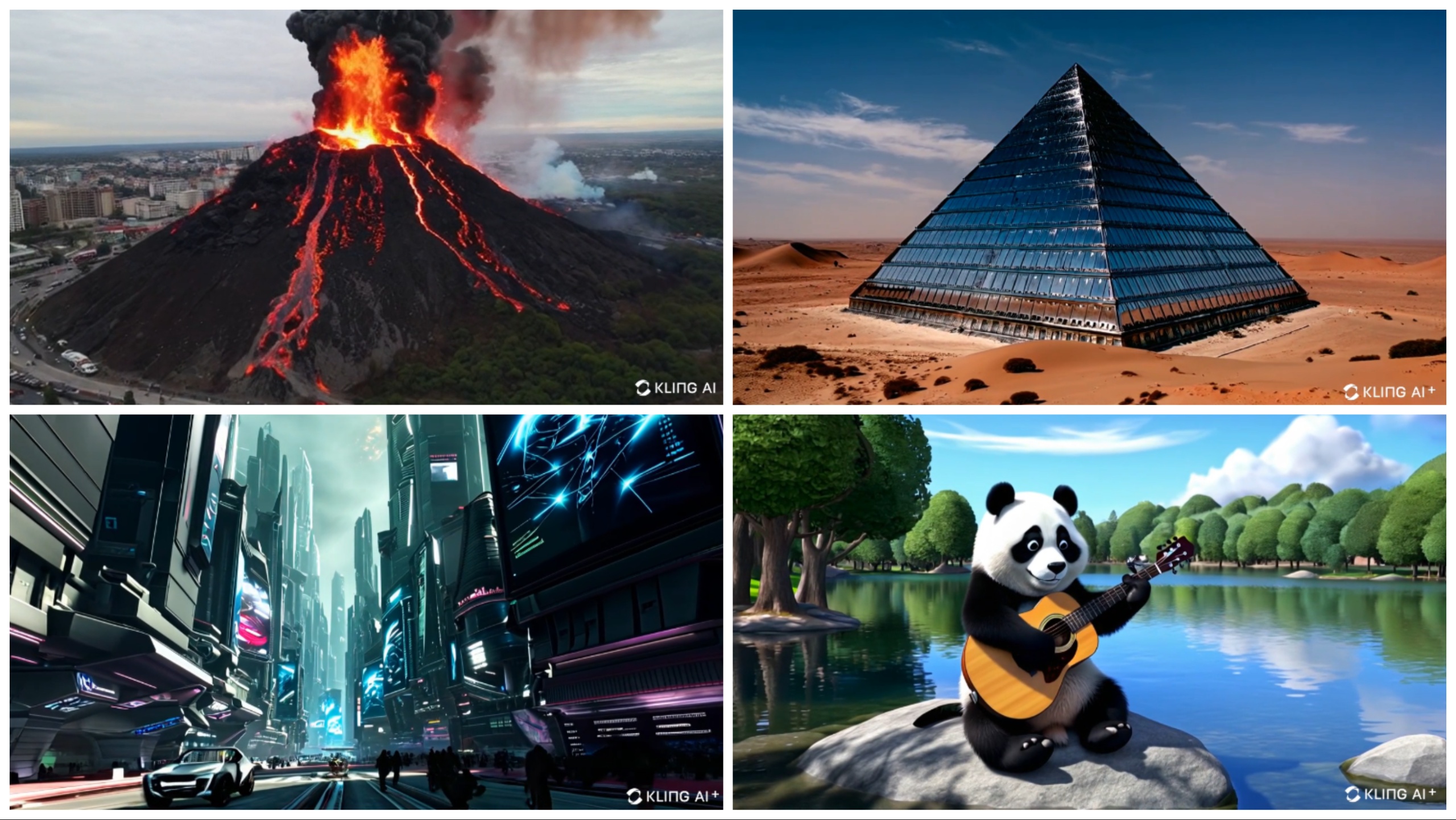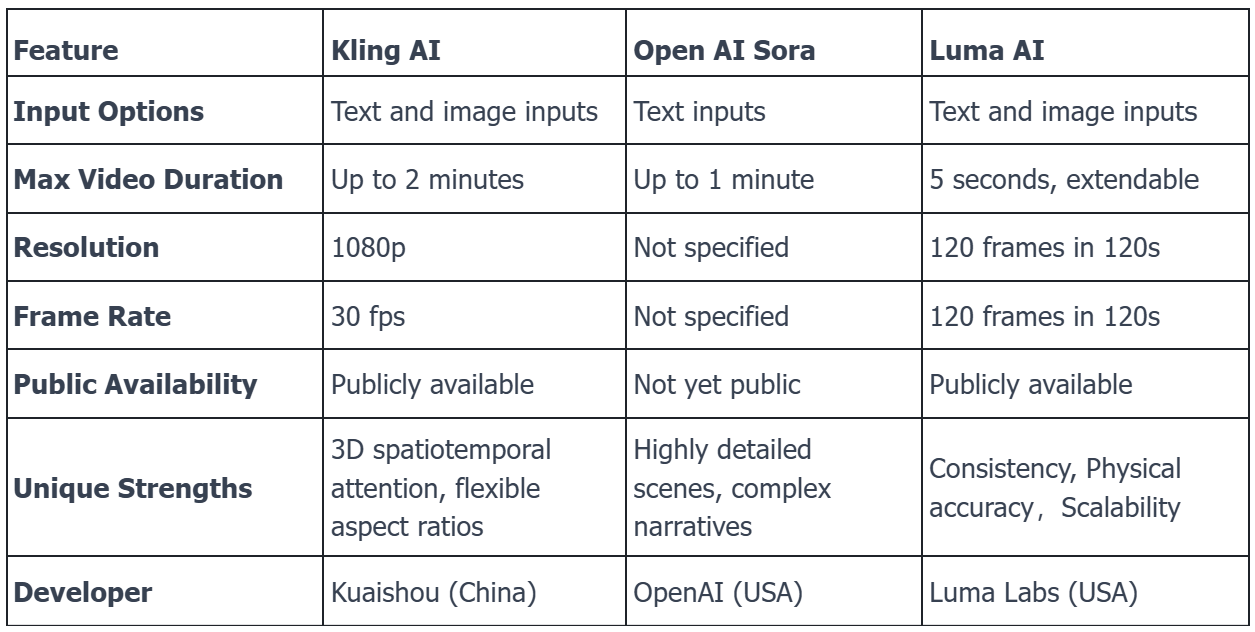
Exploring the Power of Kuaishou Kling AI Video Generator, Luma AI's Rival

What is Kuaishou Kling AI
Kling AI, developed by Kuaishou Technology, is an advanced AI video generator that transforms text or images into high-quality, realistic videos. Known for its advanced real-world physics AI models, Kling AI video generator can create lifelike videos up to two minutes long with 1080p resolution at 30 frames per second. Compared to other AI video generators like Luma AI and Sora, Kling AI utilizes cutting-edge 3D spatiotemporal joint attention mechanisms to deliver impressive realism and detail, offering unique capabilities in the field.
How Does Kling AI Work
Kling AI works by leveraging advanced deep learning techniques, including Deep Convolutional Neural Networks (DCNNs) and a 3D spatiotemporal joint attention mechanism. This allows Kling AI video generator to accurately model complex motions and generate realistic videos from text prompts. Additionally, the Kling AI image to video transformation utilizes 3D Variational Autoencoder (VAE) technology to create lifelike visuals, making it a powerful tool for creating high-quality, engaging content.
How to Access Kling AI Video Generator
Method 1: Access via Kling AI Website
Step 1: Visit the Website
Go to klingai.com and use your email to create an account.
Step 2: Input Text or Image
Navigate to the AI Videos section. For text-to-video, enter your prompt, adjust settings, and choose camera movement. For image-to-video, upload your image, adjust settings, and enter a text prompt to generate the video.
Step 3: Preview and Download
Preview your video to ensure it meets your expectations, then download the final version.
Method 2: Access via Ysechat.ai
Step 1: Visit Ysechat.ai
Click on the button at the top of this article page to access the AI Video Generator.
Step 2: Input Text or Image
Directly enter text to generate a video, or upload an image to create a video.
Step 3: Preview and Download
Preview the generated video to make sure it aligns with your requirements. If it does, proceed to download the completed video.

Key Features of Kling AI Video Generator
High-Resolution Video Generation
Kling AI creates videos up to two minutes long with 1080p resolution at 30 frames per second, ensuring high-quality output.
Advanced Motion Simulation
Utilizing a 3D spatiotemporal joint attention mechanism, Kling AI accurately simulates complex motions and real-world physics.
Customizable Settings
The Kling AI video generator allows users to adjust various settings, including creativity, mode, video length, frame ratio, and camera movement, tailoring the video output to specific needs.
Realistic Facial and Body Reconstruction
Kuaishou Kling employs 3D VAE technology to reconstruct realistic facial expressions and body movements from single images.
Kling Real World Physics AI Model
The Kling AI video generator utilizes a sophisticated physics model to ensure that generated videos adhere to real-world physical laws, enhancing the realism and authenticity of the content.
Concept Combination Ability
Kling AI utilizes a diffusion transformer architecture that allows it to combine various complex concepts from text prompts, creating unique and imaginative video scenes.
Comparison: Kling AI vs. Sora vs. Luma AI

Kling AI, developed by Kuaishou Technology, stands out with its ability to generate videos up to two minutes long at 1080p resolution and 30 frames per second. It supports both text and image inputs and uses 3D spatiotemporal attention mechanisms for realistic motion simulation and flexible aspect ratios. Open AI Sora, although not yet publicly available, is known for creating highly detailed scenes and complex narratives with text inputs. Luma AI offers a high frame rate of 120 frames in 120 seconds and excels in consistency, physical accuracy, and scalability, also supporting both text and image inputs. Each of these AI video generators has unique strengths, catering to different needs and preferences in the field of AI-driven video content creation.
FAQ: Questions and Answers about Kling AI
1、What are the input options available for the Kling AI image to video feature?
The Kling AI image to video feature accepts both text prompts and image inputs, allowing users to transform static images into dynamic, lifelike videos.
2、What is the main advantage of using the Kling AI video generator?
The main advantage of using the Kling AI video generator is its ability to create high-quality, realistic videos with advanced motion simulation and 1080p resolution at 30 frames per second.
3、How does Kling AI utilize real-world physics AI models in its video generation?
Kling AI employs real-world physics AI models to simulate complex motions and physical interactions accurately, resulting in videos that adhere closely to real-world physics.
4、How can content creators benefit from the Kuaishou Kling AI video generator?
Content creators can benefit from the Kuaishou Kling AI video generator by utilizing its customizable settings, such as camera movement and frame ratios, to produce tailored and engaging video content.
5、How does the Kling AI video generator handle complex scene generation?
The Kling AI video generator handles complex scene generation through its diffusion transformer architecture, which allows for the combination of various intricate concepts to produce unique and imaginative video scenes.
6、What makes Kling AI different from other AI video generators like Sora and Luma AI?
Kling AI differentiates itself with its 3D spatiotemporal attention mechanism and longer video duration capabilities, offering a versatile and powerful tool for video creation.
7、Is the Kling AI video generator accessible globally, and how can users access it?
Yes, the Kling AI video generator is publicly available globally. Users can access it by visiting klingai.com and creating an account to start generating videos.
8、What are the potential ethical considerations associated with the use of Kling AI real-world physics AI models?
The potential ethical considerations associated with the use of Kling AI real-world physics AI models include the possibility of creating deepfake content, which may raise concerns about authenticity and misuse.